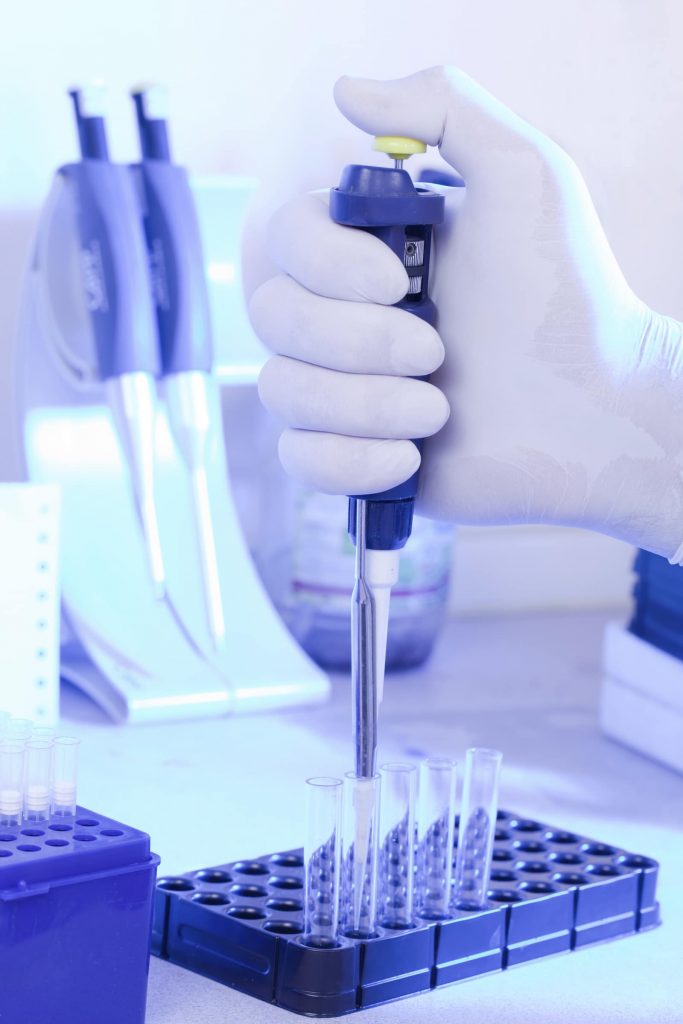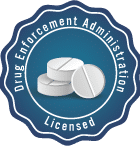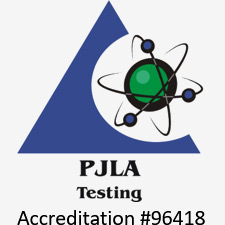Chemical migration is a significant issue for developers of medical devices and pharmaceutical packaging. There is often the risk that small molecule substances will transfer from polymer systems (packaging, container closures, drug delivery devices, etc.) and contaminate materials that will directly contact end-users. E&L testing seeks to explore two forms of chemical migration, extractables and leachables.
- Extractables are chemical compounds that can be extracted from a material under aggressive laboratory conditions, such as elevated temperature and use of solvents. They represent a theoretical worst-case scenario for what could migrate into the drug.
- Leachables are compounds that actually migrate into the drug product under normal storage or use conditions. They are typically a subset of extractables and are more representative of real-world risk.
Extractables and leachables (E&L) testing plays a critical role in ensuring drug safety and maintaining the integrity of pharmaceutical products. It helps identify potentially harmful substances which, if left unchecked, can compromise a product’s efficacy, stability, and safety. As such, E&L testing is indispensable for safeguarding the end-user and ensuring that the therapeutic product performs as intended.
E&L testing involves a thorough analysis of the chemical compounds that can be extracted from or leach out of a material into a formulation or device—sometimes described as an E&L profile. Polymers, adhesives, inks, and coatings can all contribute to this profile. Typical examples of E&L’s include extractable molecules such as:
- Antioxidants
- Chemical scavengers
- Cross-linkers
- Lubricants
- Oligomers
- Plasticizers
- Surfactants
- Slip agents
- Residual monomers and oligomers
How is E&L Testing Conducted?
E&L testing involves a rigorous and highly-specialized multi-phase analytical approach. The process begins with a thorough understanding of the materials in question and is guided by the intended use of the product, as well as regulatory requirements. Testing typically proceeds in a staged fashion, starting with extractables studies, followed by targeted leachables evaluations.

Sample Preparation and Extraction Techniques
Extractables studies employ exaggerated conditions to mimic worst-case scenarios. Materials are exposed to a suite of solvents of varying polarity – commonly water, ethanol, hexane, and isopropanol – under elevated temperatures for extended durations. These conditions are carefully chosen to simulate aggressive extraction environments that might occur over the shelf life of a pharmaceutical product. The resulting extracts are then concentrated and filtered to prepare them for analytical testing.
Analytical Instrumentation
- GC-MS (Gas Chromatography-Mass Spectrometry): This technique is ideal for volatile and semi-volatile organic compounds. In E&L testing workflows, GC-MS is often employed to identify plasticizers, antioxidants, and degradation products from polymeric materials.
- LC-MS (Liquid Chromatography-Mass Spectrometry): LC-MS complements GC-MS by targeting non-volatile and thermally labile polar compounds. It is particularly valuable for analyzing oligomers, stabilizers, and reactive intermediates that may not be amenable to GC-based methods.
- ICP-MS (Inductively Coupled Plasma-Mass Spectrometry): For inorganic contaminants such as metal ions leaching from pigments, catalysts, or container surfaces, ICP-MS provides the sensitivity required to detect even trace-level elements, often down to parts-per-trillion.
Qualification and Quantification
Each analytical method undergoes rigorous validation for key parameters such as limit of detection (LOD), limit of quantification (LOQ), linearity, and repeatability. Calibration standards and internal standards are used to ensure that results are both precise and reproducible. Where possible, compounds are quantified against certified reference materials, and unidentified peaks are carefully flagged for further toxicological assessment.
Challenges & Best Practices
- Variability in Polymer Formulations: Raw material batch-to-batch variability can impact E&L outcomes. Close coordination with suppliers is essential.
- Complex Data Sets: Interpretation requires collaboration between analytical chemists and toxicologists to contextualize findings.
- Cross-Disciplinary Coordination: A successful E&L program integrates expertise in materials science, toxicology, and regulatory affairs—subjects explored further below.

How Do E&Ls Relate to Toxicological Risk?
While the analytical phase of E&L testing identifies and quantifies chemical migrants, this information alone is insufficient without understanding the potential health risks these compounds may pose. Toxicological risk assessment bridges this gap. It is a crucial step that contextualizes analytical findings by evaluating their relevance to human health, ensuring that all detected substances—whether known or unknown—meet acceptable safety thresholds.
- Safety Thresholds: Safety evaluation involves comparing detected compounds against thresholds such as the Permitted Daily Exposure (PDE), Threshold of Toxicological Concern (TTC), and Safety Concern Threshold (SCT).
- Use of TTC: For unknown or uncharacterized compounds, TTC can be used to evaluate the potential risk based on known toxicological data.
- Unidentified Compounds: These are conservatively assessed or investigated further to ensure no health risks are posed.
Regulatory Expectations
Regulatory bodies such as the FDA, EMA, and ICH have established strict guidelines for E&L testing. Key references include USP <1663> for extractables and USP <1664> for leachables. These guidelines emphasize a risk-based approach, ensuring that testing strategies are tailored to the specific product, its route of administration, and its packaging components.
- Product-Specific Requirements: Requirements differ based on the drug type and administration route. For example, inhalation and parenteral products have stricter E&L thresholds due to direct exposure to sensitive tissues.
- Risk-Based Approach: Guidelines like those in USP <1663>/<1664> and ICH Q9/Q3D recommend tailoring the E&L strategy based on risk, leveraging scientific judgment and product knowledge.
E&L Testing with Jordi Labs
Jordi Labs was established in 1980 to provide excellent and innovative analytical services with uncompromising integrity. We now offer numerous analyses for polymer technologies, pharmaceuticals, medical devices and the biotechnology sectors.
Our expertise in E&L testing encompasses background information gathering, tailored study design, method development/validation, and unknown extractables and leachables identification. Jordi Labs has continuously demonstrated expertise in the field of E&L testing for various polymeric materials used in medical devices, container closure systems, single use systems, packaging and more.
If you would like any more information about performing E&L testing the Jordi way, please do not hesitate to contact us.





